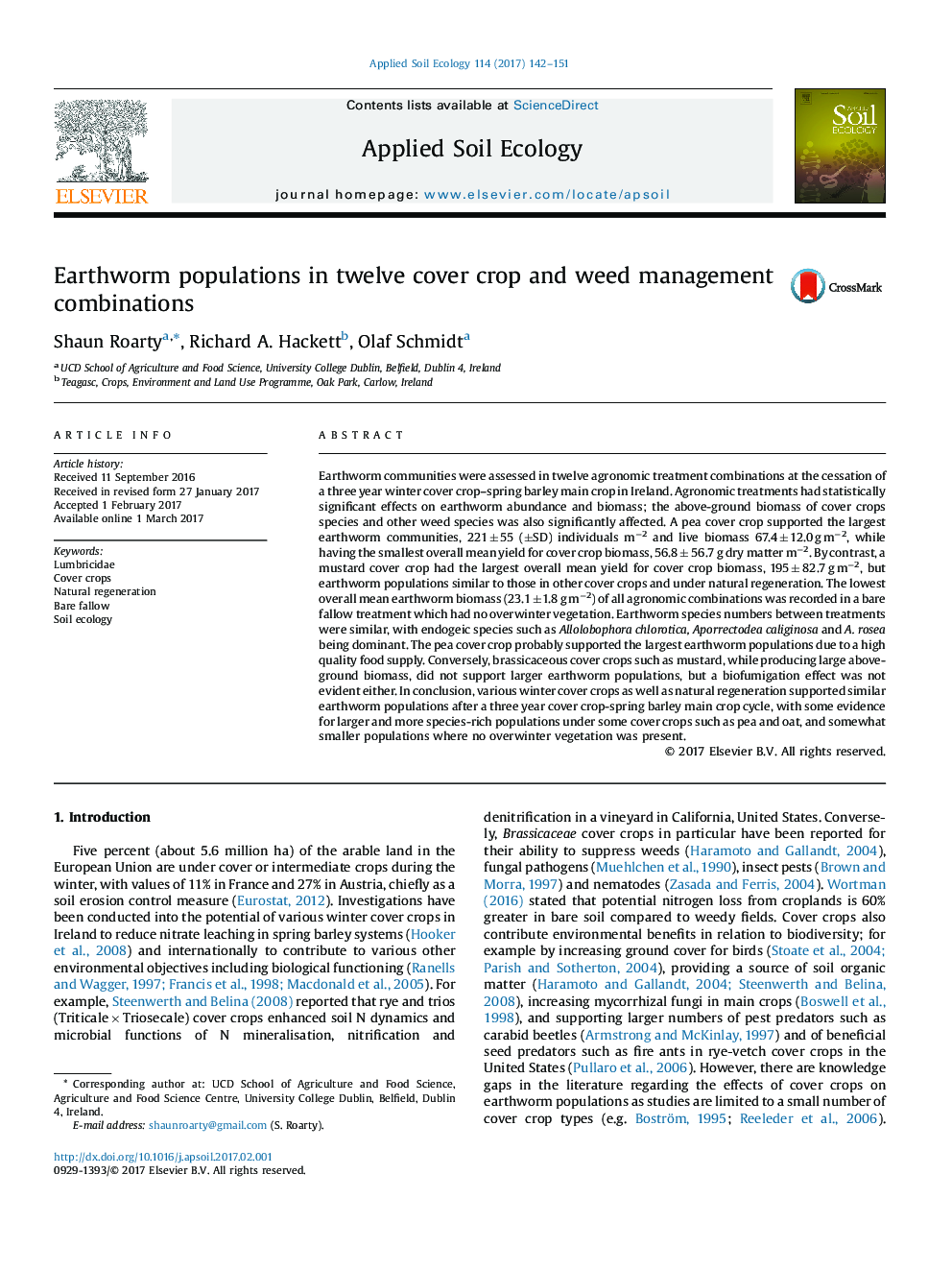| کد مقاله | کد نشریه | سال انتشار | مقاله انگلیسی | نسخه تمام متن |
|---|---|---|---|---|
| 5742722 | 1617769 | 2017 | 10 صفحه PDF | دانلود رایگان |
- Cover crop type and weed management had significant effects on earthworms.
- A pea cover crop supported the largest mean earthworm populations.
- Mustard yielded the largest mean cover crop biomass.
- Cover crop biomass was not correlated with earthworm population size.
Earthworm communities were assessed in twelve agronomic treatment combinations at the cessation of a three year winter cover crop-spring barley main crop in Ireland. Agronomic treatments had statistically significant effects on earthworm abundance and biomass; the above-ground biomass of cover crops species and other weed species was also significantly affected. A pea cover crop supported the largest earthworm communities, 221 ± 55 (±SD) individuals mâ2 and live biomass 67.4 ± 12.0 g mâ2, while having the smallest overall mean yield for cover crop biomass, 56.8 ± 56.7 g dry matter mâ2. By contrast, a mustard cover crop had the largest overall mean yield for cover crop biomass, 195 ± 82.7 g mâ2, but earthworm populations similar to those in other cover crops and under natural regeneration. The lowest overall mean earthworm biomass (23.1 ± 1.8 g mâ2) of all agronomic combinations was recorded in a bare fallow treatment which had no overwinter vegetation. Earthworm species numbers between treatments were similar, with endogeic species such as Allolobophora chlorotica, Aporrectodea caliginosa and A. rosea being dominant. The pea cover crop probably supported the largest earthworm populations due to a high quality food supply. Conversely, brassicaceous cover crops such as mustard, while producing large above-ground biomass, did not support larger earthworm populations, but a biofumigation effect was not evident either. In conclusion, various winter cover crops as well as natural regeneration supported similar earthworm populations after a three year cover crop-spring barley main crop cycle, with some evidence for larger and more species-rich populations under some cover crops such as pea and oat, and somewhat smaller populations where no overwinter vegetation was present.
Journal: Applied Soil Ecology - Volume 114, June 2017, Pages 142-151
